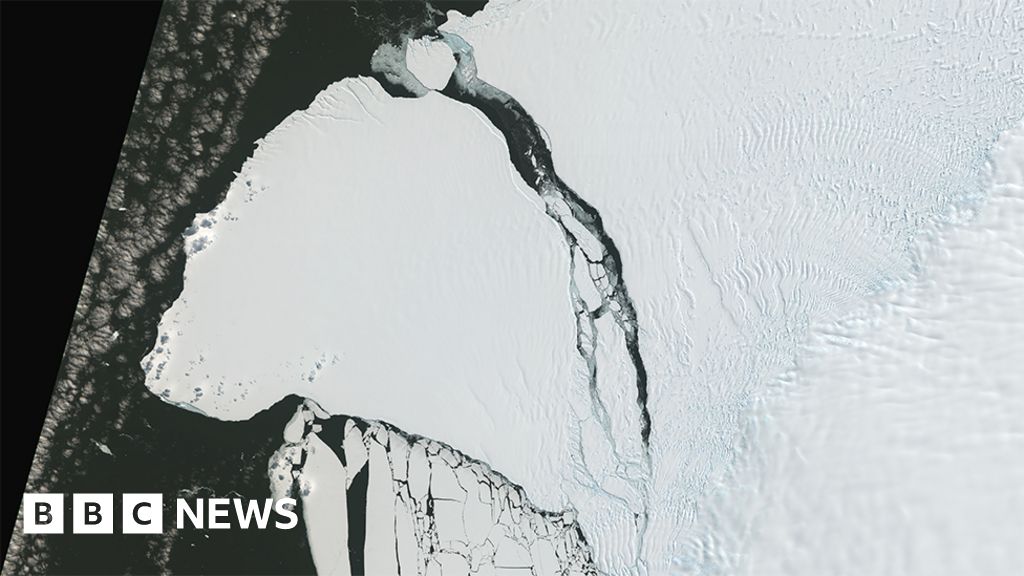Clouds part to reveal colossal Antarctic iceberg
The EU’s Sentinel-2 satellite obtains a crystal clear image of Antarctica’s new monster iceberg. …


The calving of large bergs from a shelf structure can lead to a speed-up in the flow of the ice. Before the calving, the Brunt was flowing westwards at a rate of about 3m/day. If it now experiences an acceleration, this could influence the behaviour of other cracks in the area. In particular, scientists are watching very closely a fissure they call the Halloween Crack. This is sited to the north and east of Halley, and is propagating away from the base. The researchers will want to observe its reaction, if any. Much will depend on what happens at the so-called McDonald Ice Rumples – a raised area of seafloor that catches the underside of the Brunt shelf and ordinarily helps pin it in place.


